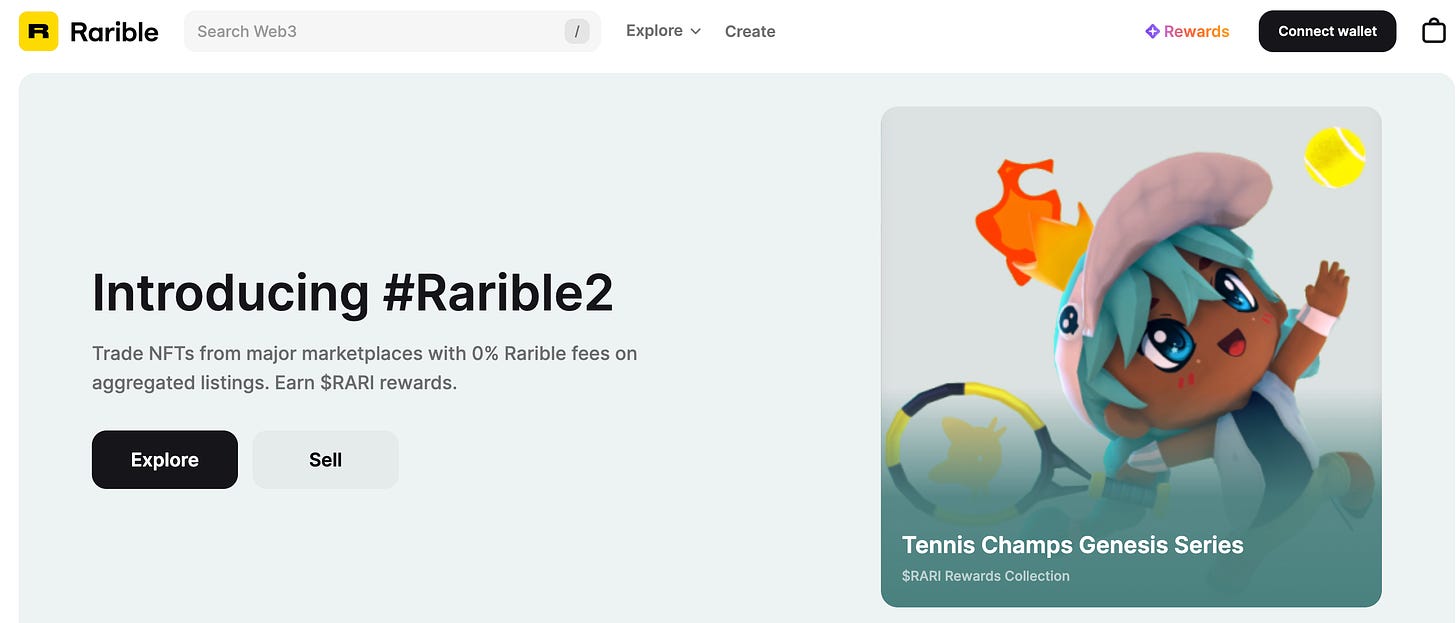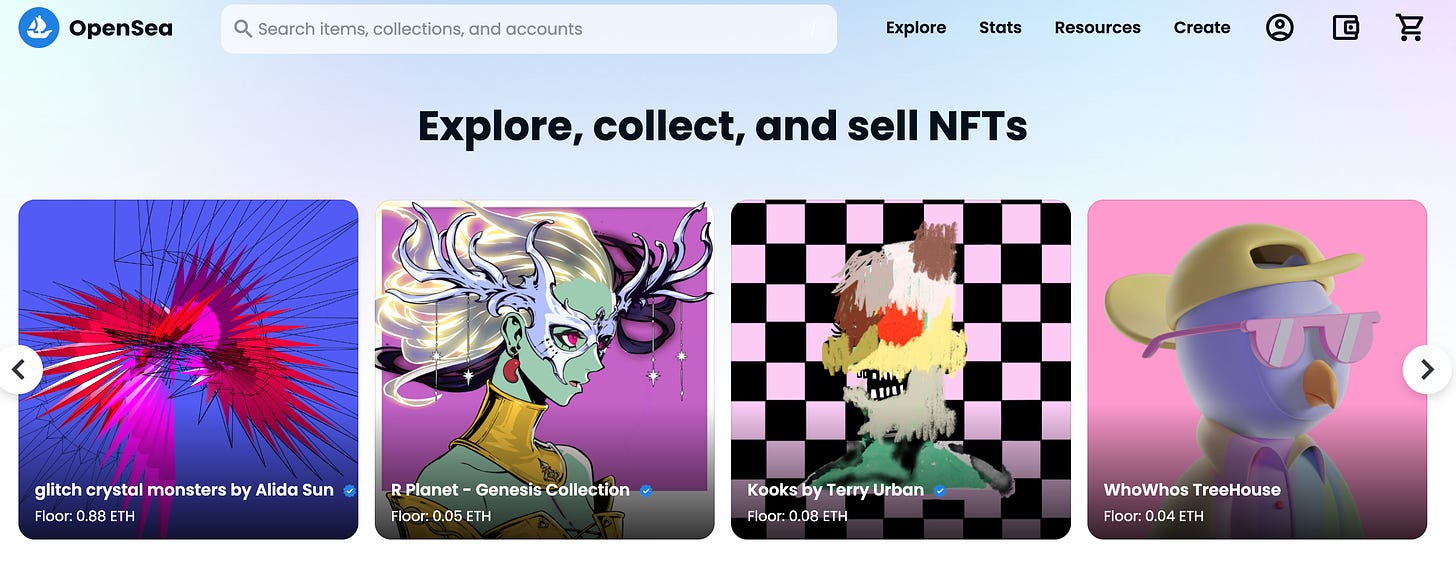Royalties, Royalties, Royalties 🎶
$3.9 billion.
That is the total amount of money 22,400 web3 creators generated in 2021, according to a16z, resulting in an average revenue per creator of $174,000. The craziest part about all of this is that most of this revenue is generated from secondary sales on the market, better known as royalties.
The topic of royalties has been a hot topic in the web3 world over the past few weeks because of some major web3 players threatening to clawback all royalty payments for creators. Since this is such a core part of web3, you can imagine there are strong opinions on both sides of this debate. But before we dive into the tea, let’s provide some context on what royalties are, how they benefit web3 creators, and why this is a big deal. 👀
So, what are royalties? 🤔
Before we dive too deep into the web3 world, let’s take a second to level set on what exactly royalties are. Royalties, as defined by the Investopedia, is a “legally binding payment made to an individual or company for the ongoing use of their assets.” The royalties are usually decided by a licensing agreement between two parties, and are paid out as a percentage based on factors like exclusive rights (i.e., who can use this product), technology (i.e., is this an online item or physical), and uniqueness (i.e., how many other versions of this are available).
Now a lot of the time when people think about royalties, they think about artists in the music industry. But the truth is, that’s just the tip of the iceberg. Royalties come in all shapes and sizes, such as, but not limited to:
Book publishing: paying advances or future royalty income to the author based on future book sales
Franchises: think of a restaurant chain like Burger King - the owner (franchisee) of the restaurant pays Burger King (franchisor) a set % of gross sales to own and operate a business
Patents: anytime a patent is used, the licensor of the patent receives a portion of the revenues
Creators: this includes your bloggers, vloggers, dancers, musicians, etc. - receiving royalty payments for the use of their talent, production, intellectual property, and more, based on agreements they have with different brands and platforms
What about Creators in Web3?
As you might have seen from that last group, royalties for creators can be kind of a tough one to figure out. Let’s take a traditional artist for example, like a painter 🎨. Sure, the painter makes money when they sell their painting, but what about the resale? Or the sale after that? Usually the artist doesn’t see those sales hitting their bank account, instead they gain more “popularity”... maybe.
In web3, royalties alleviate that problem. In the world of Non-Fungible Tokens (NFTs), royalties are fees paid to creators every single time their NFT changes hands from one person to another, even in the secondary market
How? The blockchain, my friend.
NFTs are essentially smart contracts registered on the blockchain. So no matter who an NFT gets sold to, you can always trace this back to the original owner and creator. And typically the percentage of sale designated for royalties is set by the creator at the time of minting.
But there’s a slight issue…
These contracts aren’t legally binding, so to speak.
Let’s take Rarible for example, an Ethereum-based NFT marketplace that prides itself on low fees.
To sell your product on their marketplace, you have to grant Rarible the royalty-free rights to post their NFTs on the platform. So… even though the platform embeds the terms of the royalties via smart contract, the platforms don’t necessarily have to listen 🙃
Opensea has entered the chat with their own (potentially controversial) approach to royalties.
As a quick refresher, OpenSea is the world's first and largest digital marketplace for crypto collectibles and NFTs. If you’ve ever considered creating or buying an NFT, chances are you’ve definitely heard of this marketplace. Lately, there’s been a growing trend of rival marketplaces not giving creators royalties, so OpenSea shared their plans regarding royalties on Twitter a few days ago.

What does this mean? Two key things:
Certain market places will be blacklisted: OpenSea is rolling out a snippet of code that creators can choose to add to their NFT contracts to blacklist certain marketplaces that do not require traders to pay royalties. This system is set to take effect on November 8.
Existing NFT projects may be at risk: OpenSea is still determining what to do about existing NFT projects, and will begin getting community feedback ahead of their December 8 deadline to make a decision. They're ultimately determining whether to make royalty fee payments optional for traders, as some other marketplaces have done.
Why is this problematic?
Let’s be honest here. When you give people a choice to buy the same product for a cheaper price, most people will always do it. In the case of web3, when creator royalty fees aren’t required, many traders opt not to pay them. Data from X2Y2 in late October has shown that just 18% of traders bothered to pay any royalty amount when it was optional.
Many creators feel like this is a direct contradiction to everything web3 stands for. There’s also a risk of these marketplaces becoming centralized and controlled by a few key players, especially if you’re only able to sell on a limited number of marketplaces to gain royalties.
OpenSea’s decision could signify a turning point for creators.
No matter what decision they make, there will be implications either way. If OpenSea decides to retroactively make royalties optional for current NFT projects on their marketplace, they risk losing a large portion of their creator community. Because honestly, what’s the difference between web2 and web3 if this happens? Not much. Not much at all.
We’ll be closely watching what happens, and hopefully in one month from today we’ll have an update for you that favors the people who are driving creativity and innovation in the space.






